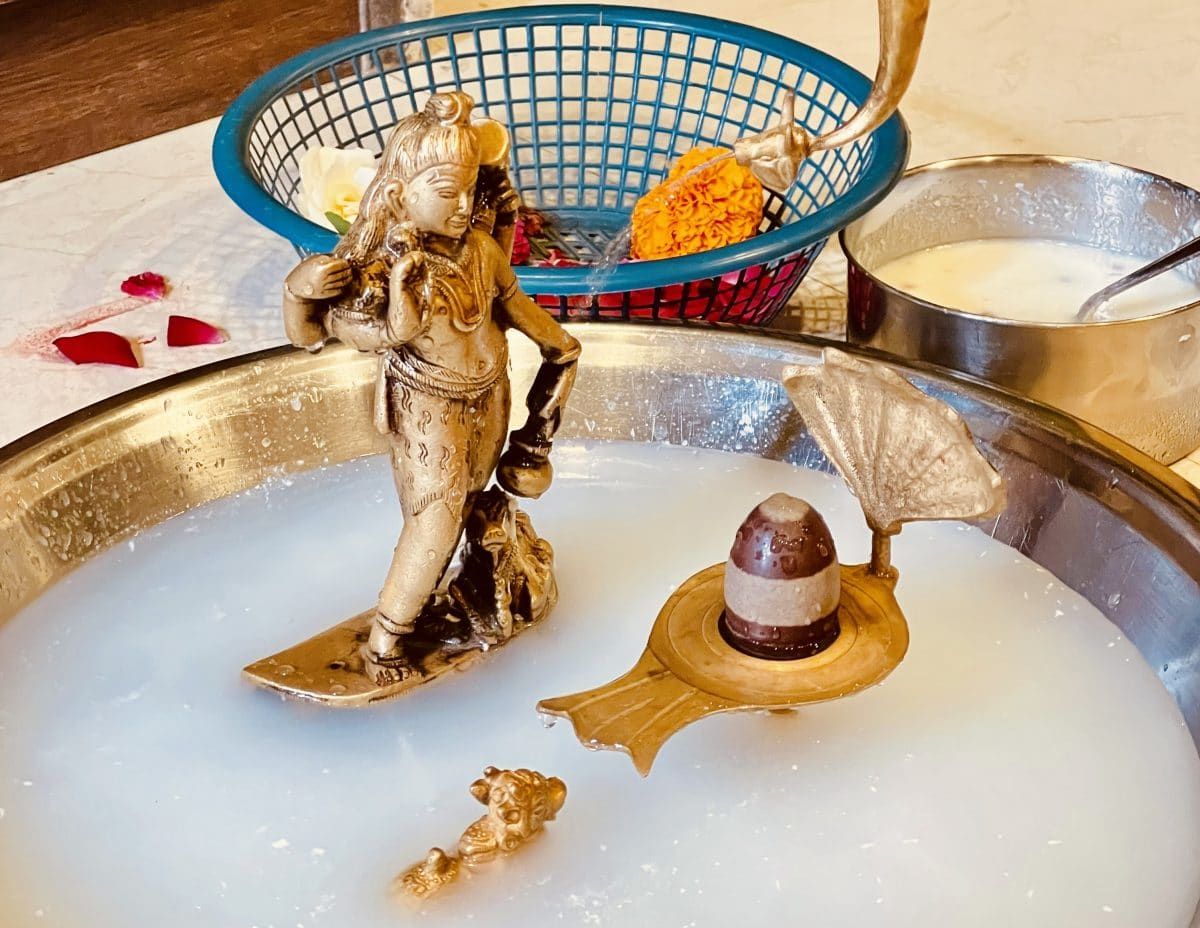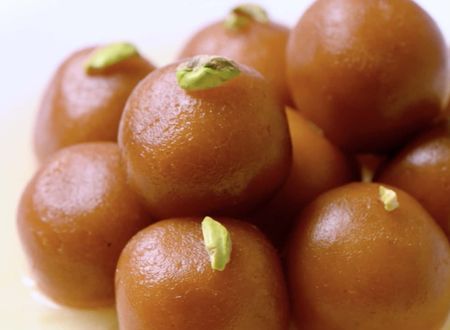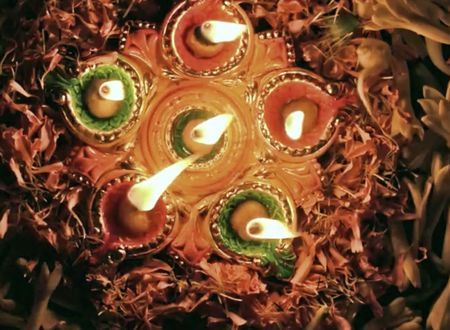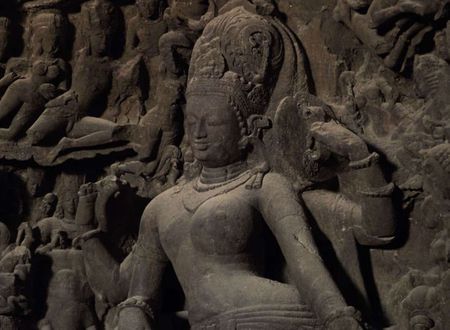
 “Vedah Shivah Shivo Vedah”
“Vedah Shivah Shivo Vedah”
I was aware of the term “Rudrabhishekam” as I had heard this term from Pandits (Priests) visiting our home & also got this ritual performed few times in the month of Shravana. However, I used to be mentally oblivious about the ongoing rituals, sitting through The Abhishekam passively, trying to follow the cryptic instructions being stated by the Pandits. My mind used to wander weirdly to everything except the ritual. I tried hard to concentrate on the Shivalinga & the chanting but to no avail.
In February 2020 I went to Shri Badrika Ashram to attend a Medical Camp being organized by The Ashram. I was also fortunate to get initiated by Revered Swamiji in the same visit. I reached Ashram a bit late on Shivaratri. Rudrabhishekam was almost midway & Shri Hari was being offered sundry sacred ingredients along with chanting of Vedic hymns. Shri Hari was adorned with innumerable Rudraksha Rosaries making everyone in the temple experience the presence of The ever Imposing & Colossal Rudra, ‘mightiest of the mighty’ SHIVA.
One of the close devotees of Swamiji was chanting Shri Rudram. Swamiji was donning a black robe along with Rudraksha rosaries tied around His Arms. Swamiji appeared alluring enough to make my heart skip a beat. He was standing lean & tall, busy in the fine intricacies of the arcane ritual, adorning Shri Hari with elaborate ingredients like vermilion, turmeric, milk, curd, fragrances to name a few. One has to see Swamiji perform Abhishekam with the Divine conviction of offering Abhishekam to the Deities. He does it with utmost affection & devotion. It was an emotional & surreal moment for me. Later each one of us received Prasadam & one Rudraksha Rosary out of the numerous, Shri Hari was embellished with. What more one could have asked for.
Probably from this day on, the zeal to learn more about Shri Rudram got seeded in my mind. On returning back home, I started searching online about books to comprehend Shri Rudram & get a feel of this eternally powerful hymn.
Those were the days Covid cases were on a rise in India & the first lockdown was imposed in March 2020. This changed my priority towards managing my hospital & keep my staff motivated. We also couldn’t make it to The Ashram for the Navdurga Sadhana & finally we all did it virtually with Swamiji. It was a pathbreaking experience in my spiritual journey as my heart had been yearning for this spiritual extravaganza since quite some time. Rest of the year was consumed by the unrelenting Pandemic. We also shifted to our new Hospital building by Swamiji’s Grace in December 2020.
After we were done with shifting, somewhere in mid January 2021, I again started having the desire to learn or rather just know more about the source & meaning of Shri Rudram, as Mahashivaratri was approaching. I purchased few books online, procured a Gaumukhi Shringi ( A ritual vessel for performing Abhishekam) & watched some videos online about the Rudram chanting & The Rudrabhishekam process. I decided to take a leave from the hospital on Shivaratri 2021 to be able to perform Rudrabhishekam or at least meditate on Shri Rudram. I was not confident of the technique, so I chose to simply listen to Shri Rudram & perform Rudrabhishekam sometime later. In the evening I witnessed live Rudrabhishekam online from Shri Badrika Ashram along with my family.
Alas, very much like 2020, Covid cases again started to rise, this time even more ferociously, from early March. Rest is history. Most hospitals including our hospital was converted into a Dedicated Covid Hospital. I was barely getting time to eat or sleep because of the unprecedented number of Covid patients we were caring for. This all continued unabated till Mid June. By July, few cases of Covid were being reported & even fewer required hospitalisation. I again started planning to perform Rudrabhishekam in the month of Shravana. In fact I wished to do Rudrabhishekam once our hospital had a functioning oxygen plant. Swamiji’s Grace made all the Miracles happen, I could have ever imagined..
In learning to do Rudrabhishekam & getting acquainted with the seemingly formidable Shri Rudram, I felt like penning down my experiences & musings with Shri Rudram, as I was doing everything on my own. I feel it shall make more devotees try & do Rudrabhishekam or meditate on Shri Rudram. This document will also be used as a ready reckoner by me 🙂
Introduction
Shri Rudram, is a Vedic chant in homage to Rudra (Shiva) taken from the Shukla Yajurveda’s Taittiriya Samhita. Shri Rudram is also known as Shri Rudrashtadhyayi. Shri Rudram is known for its healing vibrations.
Rudrashtadhyayi comprises of eight chapters (Adhyayas) each comprising different numbers of mantras. Each chapter is exquisite and holds its own individual importance. For the first time when I listened to Rudrashtadhyayi on YouTube with Abhishekam I got a bit jittery as it took real long. I wondered whether I would be able to continue the rituals for such a long time, as I would be on my own with the only support being from my wife. I kept scratching my head, felt lost for a while & then the good Divine message came that Rudrabhishekam is mostly done with two main chapters of the Shri Rudrashtadhyayi. I came across few Temple websites in India & Abroad which mentioned that the routine daily Abhishekam (morning) is done with the 5th (Namakam) & the 8th (Chamakam); chapters of the Shri Rudram (RUDRAPRASNA/ ROOPAM). I again watched the Shri Badrika Ashram Rudrabhishekam & got the final proof & nod. My eyes had a sparkle & my heart a boom boom. Hurrah ! Eureka ! & all sorts of cheerful exclamations kept popping in my naïve mind. I was determined & all geared up for the final test of my musings stretched over almost eighteen months. I needed Divine Grace from my Guru to see me through. I wanted to do the super sacred & transcendental ritual bathing of Rudra on my own without any priests & hang-ups. I wanted a direct connect !!!
Before summarizing the method of Rudrabhishekam I adopted with my limited knowledge, time & preparations but with loads of Swamiji’s Blessings & feasibility added for routine householder practice, I would like to sum up the Rudrashtadhyayi in the shortest way as I learnt scrolling the internet & scriptures ;
1st Chapter – Starts with the ever famous & enticing Ganapati hymn ( Om Gananam Tvam Ganapati Gum Huvamahe……), consists of 10 mantras. The interesting part is mantra 5th to 10th (5 mantras) are Known as The “SHIVSANKALP SUKTAM”, all ending with Shivsankalpamastu. These mantras are offered for the purity of the seeker’s mind This chapter is dedicated to Lord Ganesha.
2nd Chapter – Consists of 21 mantras & it’s edifying to learn that THE FIRST 16 mantras make up the most celebrated “PURUSH SUKTAM’. Purush suktam mantras are used for Shodashopchar in most deity’s worship & Vaishnav Yajnas too. The last 5 mantras are known as “UTTAR NARAYAN SUKTAM’. These mantras are used for worshiping Goddess Lakshmi. Second chapter of Rudrashtadhyayi is dedicated to Lord Vishnu.
3rd Chapter – Consists of 17 mantras, first twelve compose the “APRATIRATH SUKTAM” (KAVACHAM). It is believed that chanting mantras of Apratirath Suktam lead to defeat & elimination of enemies & hurdles. Third chapter is dedicated to Lord Indra.
4th Chapter – Consists of 17 mantras & is known as ‘MAITRA SUKTAM” dedicated to Lord Sun.
5th Chapter – Consists of 66 mantras & is the famous, very famous “NAMAKAM ADHYAYA”, “Shatarudriya” or “Rudra Suktam”. The Namakam in particular enumerates the various epithets and names of Rudra (Shatanama). It recognises the violent aspects of Rudra and requests him to be benevolent and peaceful. The Namakam mantras are offered with Abhishekam to calm & please Rudra. It also acknowledges the presence of the deity in those from all walks of life.
6th Chapter – Consists of 18 mantras. Eleventh mantra onwards it is known as The “MAHICHHARA’. This chapter also contains the very powerful Mahamrityunjaya Mantra ( Om Trayambakam Yajamahe…..).
7th Chapter – Consists of only 7 mantras (Shortest) & is known as The “JATA”.
8th Chapter – Consists of 21 mantras & is the concluding “CHAMAKAM ADHYAYA”. The Chamakam enumerates the various things one would want in life and requests Rudra to grant them to the devotee. It acknowledges both material and spiritual desires and requests the deity for both. Some verses invoke other deities such as Agni and Vishnu and request them to join in the devotee’s prayers to Rudra. This is dedicated to The Fire God.
This is followed by ” SHANTI ADHYAYA’ ( 24 mantras) & finally ” RUDRA SWASTI PRARTHNA ADHYAYA” which starts with Swasti Vachan, consists of 15 mantras & concludes with OM SADASHIVARPANAMASTU.
Rudram Maha Yajnam/ Homam is a very important form of worhsip of Lord Shiva, the very source of cosmic energy for the entire creation. It is one of the highest forms of community worship, with the involvement of 11 Ritwiks reciting the Shri Rudram 11 times on 11 occassions, totalling 1331 times followed by one tenth (133) recitations for the purpose of homam.
I read the whole Rudrashtadhyayi playing it on YouTube & Sound cloud App a few times. It took me sometime to pick up a suitable track as we need to play the soundtrack while meditating or doing the Abhishekam. I am using Shri Rudram chanting by Feng Shui David Flores on Sound cloud while performing the Rudrabhishekam. By Swamiji’s grace & Divine Will I could perform Rudrabhishekam 5 times in this Shravana month of 2021 (4 Mondays & one Masashivaratri).
Preparation
Time Required – Approximately 60 minutes; preferably in the morning.
A Shivalinga ( Should face Northwards, while the seeker sits facing Eastwards), or Lord Shiva Idol or Devi or Lord Vishnu Idol or Any Deity’s Idol. Rudrabhishekam is done on Shri Hari Vigraham in Shri Badrika Ashram.
Approximately 2 litres potable water
50 ml fresh milk
Panchamrat ( Milk, Curd, Ghee, Honey, Gangajal, five types of dry fruits)
Gaumukhi Shringi or small water pot to pour liquids for Abhishekam
Flowers, Naivedhyam or sweets, lamp
Lot of Bhava (Dedication) which would suffice for any shortcomings in the technique or materials (Poojan Samagri) required.
Technique
1. After bathing, wear freshly washed clean Indian clothes preferably a Dhoti Kurta or Sari.
2. Sit on the Asana with crossed legs.
3. Place the Shivalinga or The Idol in a large size metal pot which can hold upto approx 2.5 litres of liquid.
4. Initial steps – Purification, Ganesh Stuti, 3 hand locks for Lord Ganesha, Guru Stuti, Swasti Vachan, Saraswati Stuti, Sankalpa. Light a ghee lamp or incense sticks. Apply a Tilaka or Tripund on self forehead
5. Shivashtottarnaam chanting along with Archan (Chanting 108 names of Lord Shiva along with offering Bilva Patra, flowers or Vermilion & Rice)
6. Shiva Dhyanam ( Shiv Gayatri – “Om Tatpurushaye Vidhmahe, Mahadevaya Dheemahi, Tanno Rudrah Prachodayat”, or more elaborate Dhyana Shlokas can be chanted)
7. Start the Shri Rudram soundtrack & start the Abhishekam while listening to the mantras (Single person). One can chant Shri Rudram if two or more persons are doing Abhishekam.
8. Bathe Lord Shiva with devotion & affection continuously with different offerings, intermittently rubbing & cleaning with your fingers.
9. Finally towards the conclusion of Shri Rudram, bathe Lord Rudra with clean water.
10. After Shri Rudram, either Durga Suktam or Purush Suktam is recited. I listened to the Durga Suktam before concluding the Abhishekam. Various Shiva Hymns like Shiva Tandav Stotra, Shiva Mahimna Stotra an also be chanted.
11. Dry the Idol with cotton or flowers. Offer clothes, mouli, vermilion, sandal paste, rice grains & flowers to Lord Shiva.
12. Offer Naivedhyam.
13. Prayers for forgiveness (Aparadh Kshama Stotram)
14. Mix a little amount of water (& milk) used for Abhishekam, into Panchamrat. Drink few drops of panchamrat, before distributing it to others. Remaining water mixed with milk in the pot can be used to purify the surroundings by sprinkling. Finally the bulk of Abhishekam water/milk is poured into a plant bed, garden or flower pots, & never into the drain.
This concludes the brief Rudrabhishekam (Rudraprasna/ Roopam) I learnt by myself. I have summarised my experiences & practice of Rudrabhishekam. I believe devotees who read this, would guide me further based on their learnings so that I can improve my practices. It would be really enlightening for me to read all the suggestions in the comments section. Kindly also point out the errors & omissions, which are inevitable, so that they can be rectified.
#Navdurga Sadhana #Ganesh Sadhana #Rudrabhishekam
Dedicated to The Lotus Feet of my Guru
All Glories to Swamiji
Om Namah Shivaya
Om Namo Bhagwate Rudraya
Shri Matre Namah
OM SADASHIVARPANAMASTU
Hari Om Tatsat
(Published on Purnima, Shukla paksha, Shravana maas, Hayagriva Jayanti, Rakshabandhan)
Further reading :
- Shuklyajurvediya Rudrashtadhyayi, Geeta Press Gorakhpur.
- Rudri Path, Rudrashtadhyayi, Randhir Prakashan, Haridwar.
- Saral Rudrashtadhyayi, Shri Saraswati Prakashan, Ajmer.
- Various websites – www.sssbpt.org, www.livemoretemple.org, www.manidweepa.org, www.artofliving.org









Comments & Discussion
35 COMMENTS
Please login to read members' comments and participate in the discussion.